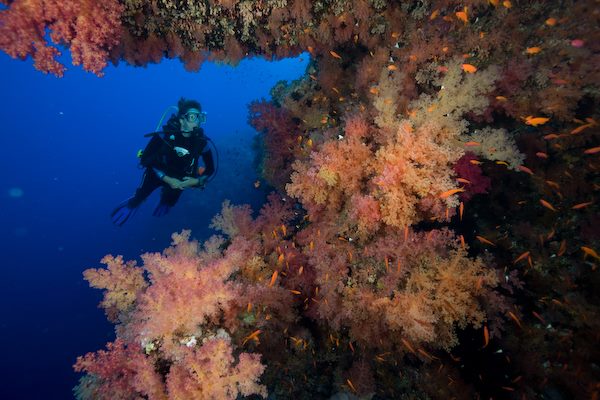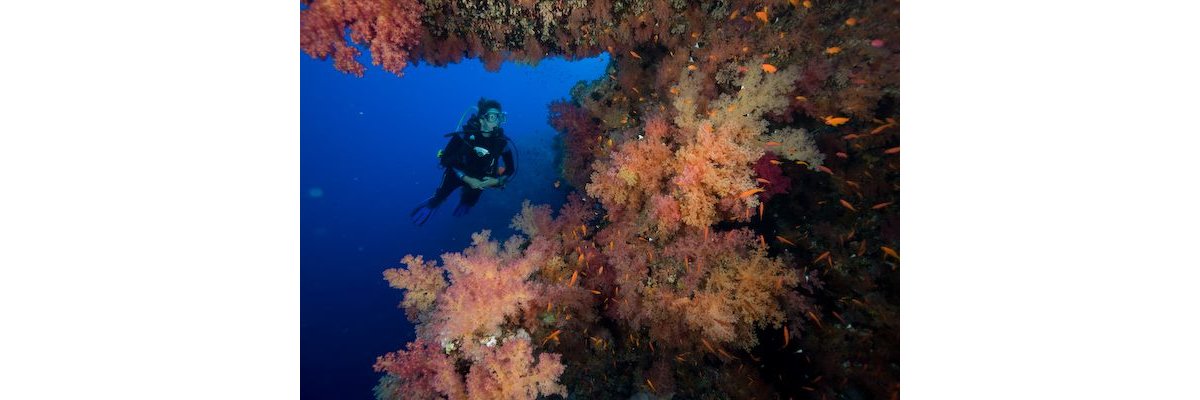The “Northern Wrecks and Reefs” is one of the most frequented liveaboard trip routes. Here divers have the opportunity to dive the wreck of the Thistlegorm, famed for its haul of tanks, jeeps, bikes and aircraft wings.
A typical dive sees boats moor up to secured moorings placed around the wreckage, divers descend the line to the wreck and go explore!
Sounds easy right? However this wreckage lays in an open channel that has frequent currents running north and south, which occasionally makes it difficult for divers to return to their boat mooring line for the ascent and safety stop. In such circumstances a blue water ascent and stop may become necessary and carrying the right DSMB for this is therefore important. Something small enough that will not cause snags during wreck penetration but clear enough to be seen at the surface from the moored yacht.
The Surface Marker Pocket Buoy is lightweight and fits easily into a regular BCD pocket, but has 152cm length so offers a tall SMB that is easily spotted.

Moving southwards we hit the offshore reefs of the Brothers and Daedalus, which can only be reached by liveaboard on a “Brothers Daedalus and Elphinstone” (BDE) itinerary.
Divers coming here are rewarded with stunning soft corals and clouds of schooling anthias. Grey reef sharks frequent the waters and reef cleaning stations, whilst Napoleon wrasse, oceanic white tips, hammerheads and whale sharks are amongst the other popular draws to the region. During the dives, the divers are given tender boat surface support, with advice from trip leaders to deploy a Surface Marker during ascent to ensure swift pick up by the tender drivers.
Being a popular route for divers, there are many boats and divers in the water at any one time… with tender boats buzzing about overhead. Sending up your DSMB is therefore not only great for quick pick up but ensures boats know where you and your buddy are in the water and avoids any incident with pesky propellers.
Instructors and guides are advised to opt for the Surface Marker Pro, but the X-Marker is more than up to the task.
The “Deep South” offers divers the opportunity to explore caverns and swim-throughs, drift along stunning coral laden walls and enjoy the schooling fish coming together in the thousands.
Dives at St John’s Reefs are about as remote as one can get in Egyptian waters…from here you could find yourself drifting off to Sudan! Meanwhile over at Rocky Island lies the wreck of the SS Maiden, a British Steamship that sank in 1923. The wreck lies at a depth of 80-120m making this dive only for those with Advanced trimix certification. If you are lucky enough to dive this wreck then having a marker is of course going to be part of your essential dive equipment. Liveaboards will offer surface support, and if the crew are good will land you directly on the wreck with the shot line, but making your ascent you want to know you can rely on your Surface Marker buoys to function correctly.
The SM-7 is strong, durable and provides 3 inflation options, plus comes in yellow, orange or mixed ideal for signalling.
Enjoy your next trip to the Red Sea and stay Surface Marker Safe!

